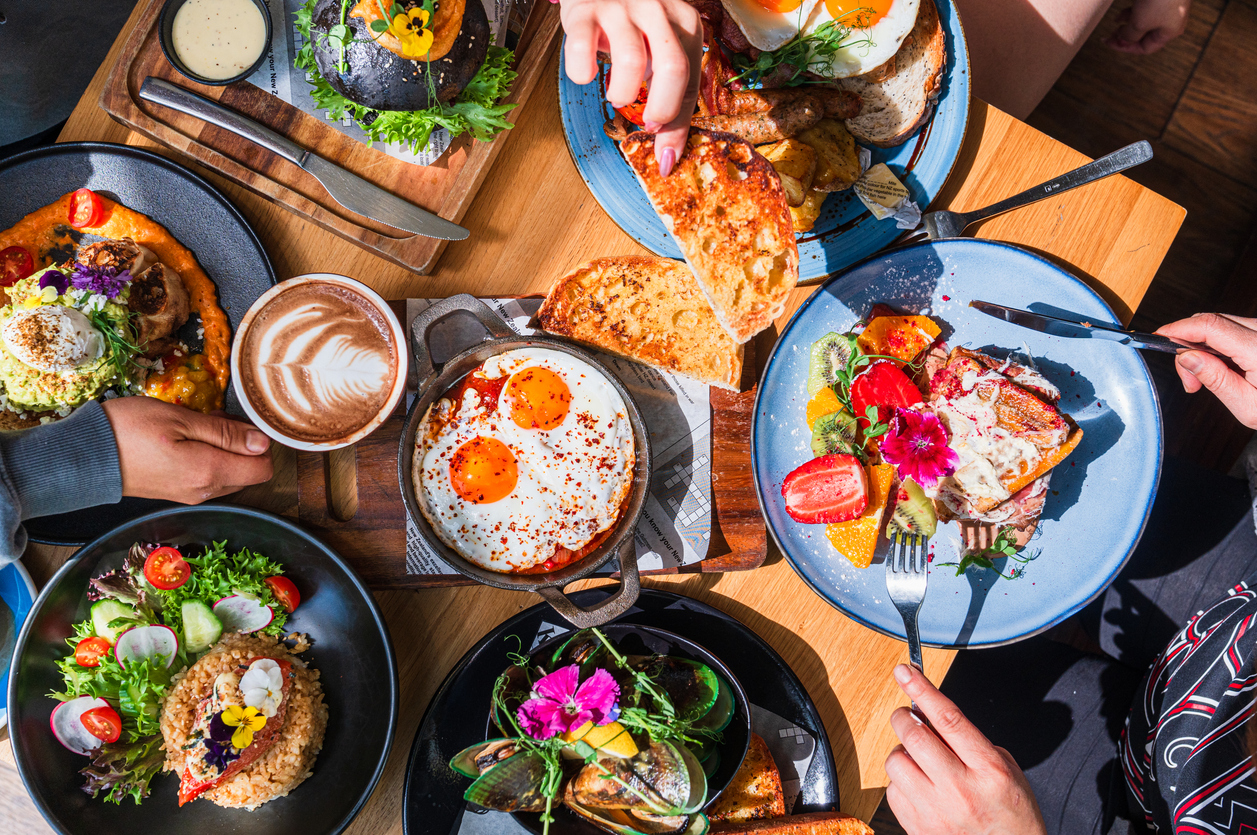As Wallets Tighten, Food Industry Dealmakers Get Picky
Shifting consumer habits are driving change in food-related M&A, from the manufacturing plant to the dining booth

As a non-discretionary spend category, the food sector can be among the most solid in times of economic uncertainty.
Yet consumers have indeed tightened their belts this year, with more than three-quarters of U.S. shoppers saying they are “trading down,” or changing the type or quantity of their purchases in favor of better bargains, according to McKinsey analysis.
How that trend influences the food sector depends on where you look. Even as buyers may forego a night of fine dining, experts say fast-casual concepts at favorable price points have kept restaurant deals on the table. Buyer habits in the grocery aisle have shifted, too, impacting where acquirers see the most promise for growth.
Amid fluctuating consumer habits, Middle Market Growth examines the state of food M&A from the manufacturing plant to the dining booth.
Manufacturing a Deal
Frugal spending often means cooking at home, and dealmakers say the trend has led the food manufacturing and packaged foods sector to remain especially strong in a tough dealmaking environment.
Family-owned Mars announced its acquisition of Kellanova, which manufactures packaged foods for brands including Cheez-It, Pringles and Eggo, in August for $36 billion, marking the largest acquisition of the year in any sector to-date.
The middle market has seen its share of dealmaking activity in the segment, too.
“Branded goods as well as ingredients manufacturers continue to see robust interest, particularly if they’re exhibiting good growth,” says Steven Loeffler, a managing director at MidOcean Partners, reflecting on MidOcean portfolio company QualiTech’s acquisition of Ellison Bakery in August. The deal sees QualiTech, which manufactures nutrition and ingredient products, augment its production with Ellison’s capabilities in the manufacturing of ingredients for cookies, snack bars, toppings and more.
Loeffler notes that Ellison was identified as an attractive investment even before it closed the QualiTech deal in June of 2023, pointing to the companies’ complementary product offerings and Ellison’s strong management team.
Other recent middle-market deals in manufacturing and packaged foods include Stellex Capital Management-backed Custom Made Meals’ acquisition of certain manufacturing assets of ready-to-cook product maker Hearthside Food Solutions, and Swander Pace Capital’s investment in private label frozen entrée manufacturer Inovata Foods.
“Food manufacturing has always been a big part of our investment thesis,” says Swander Pace Managing Director Tyler Matlock, who adds that private label food manufacturing has proven even more attractive as consumers increasingly seek cheaper alternatives to national bands that don’t compromise quality. “We see an acceleration of trends in the private label space as consumers are feeling a little bit of the inflationary environment and, over the last 12-24 months, have been pushed to try some private label products,” he notes.
Identifying food manufacturing targets with large capacity, a diversified customer list and supply chain, and a high-quality management team are key to Swander Pace’s investment strategy, Matlock adds.
Despite continued investment activity, the food manufacturing space is not immune to the challenging exit environment that middle-market M&A has faced for several years now. In lieu of a sale, some industry sponsors are relying on dividend recaps to return funds to LPs. They include New Harbor Capital, which in July announced its recapitalization of food manufacturer FoodPharma.
Elsewhere in the food supply chain, suppliers are seeing similar recapitalization activity, with IMB Partners announcing in July a $130 million recapitalization of three food suppliers in its portfolio: Alder Foods, Elite Brands and Richmond Wholesale. And in August, Vestar Capital recapitalized portco Roland Foods, an ingredients supplier.
Restaurant Sponsors Get Picky
The flip side to consumers spending money in the aisles is that they’re shying away from restaurants. Consumers’ restaurant spend, often looked at as one signal for broader economic health, declined in four out of six months for the year’s first half, per MarketWatch reports.
The result is strapped balance sheets, an uptick in restaurant bankruptcies and a loss in appetite for restaurant deals by some dealmakers—but not all.
According to Uj Rai, vice president at investment bank Configure Partners, there has been a shift among firms “to cycling restaurants entirely out of their focus area” or “meaningfully increasing the ‘bar’ for what makes a worthwhile restaurant investment.” The firm’s director Matt Guill adds that restaurant borrower performance has stagnated or declined, making it difficult to find lenders with an appetite for financing restaurant deals. “The general market sentiment around restaurants is currently risk-off,” he says.
The general market sentiment around restaurants is currently risk-off.
Matt Guill
Configure Partners
Max Heller, managing director and M&A advisory practice leader at Centri Business Consulting, agrees that restaurants are struggling to manage debt amid high interest rates and rising costs of labor, ingredients and materials. Amid a slew of bankruptcy filings this year, Heller says many investors will stay away from the restaurant space.
But restaurant deals are getting done, both for distressed assets and resilient ones. “Some of it means opportunistic buying,” Heller notes. “Some PE investors and strategics are going to see it as attractive. There will be bargains.”
He points to deals involving struggling restaurant chains including Mod Pizza, acquired by Elite Restaurant Group in July (soon after reports emerged that the fast-casual concept was preparing for a bankruptcy filing), as well as One Group Hospitality’s $365 million acquisition of Benihana parent company Safflower Holdings Corp.
Red Lobster had what was perhaps the year’s most high-profile restaurant bankruptcy, from which the chain emerged earlier this month following its acquisition by RL Investor Holdings.
In the middle-market, some dealmakers say there are still diamonds in the rough, particularly for fast-casual franchises offering friendlier pricing. PYMNTS Intelligence analysis released in July found that younger restaurant-goers are buoying their restaurant spend by favoring establishments with lower prices.
“Despite recent high-profile bankruptcies in the restaurant space, we continue to see robust interest in high-quality brands,” says NewSpring Capital General Partner Satya Ponnuru. NewSpring’s Franchise strategy acquired healthy fast-casual chain Shake Smart Holdings in March, for instance.
Other deals include Blackstone’s acquisition of Tropical Smoothie Café from Levine Leichtman Capital Partners in June and Sycamore Partners’ acquisition of Playa Bowls from Tamarix Equity Partners earlier this month. According to Ponnuru, these transactions “demonstrate the ability of strong brands with a loyal customer following, proven unit economics, and embedded growth to successfully attract strong investor interest, even in a challenging macroeconomic environment.”
I think the great thing about food is it’s extremely resilient, very stable and people recognize that. That gives investors good comfort in the longevity of it.
Steven Loeffler
MidOcean Partners
With the Federal Reserve announcing its long-awaited interest rate cut earlier this month, consumers may soon see some relief at the register. It could take a while, however, for that to translate to higher consumer spend in the supermarket or at restaurants, though, with food industry analysts forecasting only modest growth ahead.
Grocery conglomerate Kroger—itself the focus of a failed merger bid with Albertsons—forecasts full-year grocery spend to rise between 0.75% and 1.75%, an increase from previous estimates. The International Foodservice Manufacturers Association (IFMA), meanwhile, expects restaurant spend to grow 0.8% next year.
Still, the food sector remains an attractive space for middle-market dealmakers, with plenty of innovation and consolidation opportunity, according to MidOcean’s Loeffler. “I think the great thing about food is it’s extremely resilient, very stable and people recognize that,” he says. “That gives investors good comfort in the longevity of it.”
Carolyn Vallejo is ACG’s digital editor.


